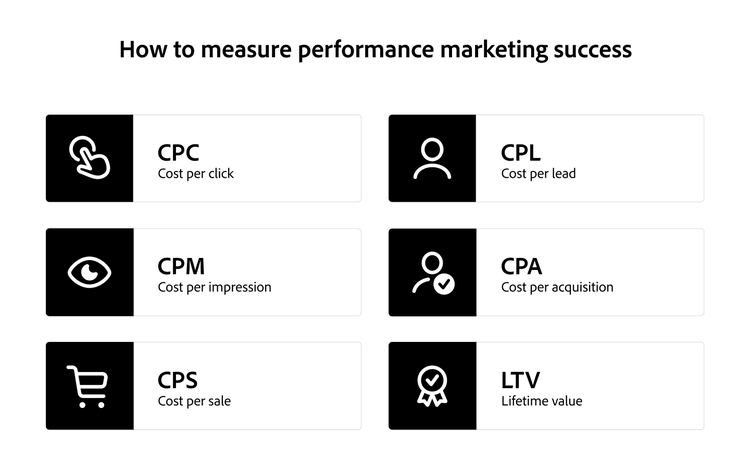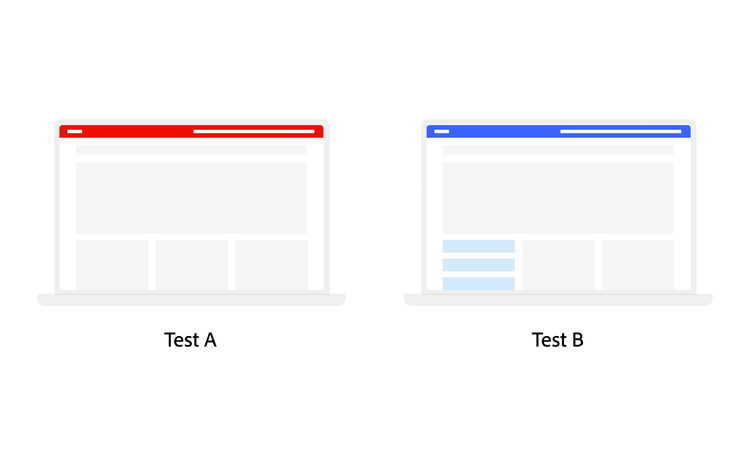You’ll find a variety of channels used for performance marketing. Here are the most popular options.
Affiliate marketing.
With affiliate marketing, an affiliate — such as a social media influencer — promotes a product and earns a commission for each sale, view, or click.
In affiliate marketing, the brand works with the affiliate, or publisher, as they promote the brand’s product. The affiliate marketer is usually required to disclose their relationship with the brand. Then they’ll usually provide consumers with a unique affiliate link and get a portion of the revenue for each sale.
Brands of all shapes and sizes use affiliate marketing. SMBs can usually find a niche micro-influencer, for example, within their limited budget, but enterprise organizations also use affiliate marketing because it’s so effective.
Affiliate marketing is flexible and low-risk, and it provides an easy way to target specific audiences. Cost per conversion and cost per like are two standard pricing models used for affiliate marketing.
Native advertising.
Another popular method of performance marketing is native advertising. Native advertising refers to paid ads that closely resemble the other content on the platform where they appear. They won’t be large banner ads or colorful display ads — you may have to look closely to see that a native ad is an ad. Examples of native advertising might include Instagram Story filters or sponsored article content.
Search engine marketing.
Search engine marketing (SEM) uses paid ads that appear at the top or bottom of a search engine results page to drive customer action and engagement. SEM differs from search engine optimization (SEO), which refers to marketing efforts that target organic search engine results.
SEM is a standard method of performance marketing. It’s highly effective because your paid ads can be targeted to catch consumers and buyers at the bottom of the sales funnel.
The cost per conversion is the typical pricing model used for SEM, as ads can be targeted to audiences who are ready to buy. There’s no need to focus on views when consumers and buyers are so close to conversion.
Social media marketing (SMM) refers to managing a brand’s social presence across various digital platforms to establish its identity and increase brand awareness. Social media marketing for performance marketing primarily focuses on social media ads.
SMM is a great outlet for performance marketing strategies because users are ready to engage, and most social media channels have extensive user data. All that data means social media ads can be acutely targeted based on location, demographics, and psychographics.
If you want to incorporate social media marketing into your performance marketing, consider placing ads on social media platforms. Depending on your brand and your audience, these platforms might include:
- Facebook
- Instagram
- Twitter
- LinkedIn
- Pinterest
- TikTok
- YouTube
You can track performance by cost per conversion, cost per view, or cost per like.
Sponsored ads typically appear on Amazon, targeting certain search keywords. You’ll define a shopping keyword (for example, “sundress”) and show the ad to a relevant audience — people searching for women’s summer clothes.
You can use your company’s first-party data (information you collect from your customers) to create more effective sponsored ads. For example, if you ship more long dresses to the Midwest and more short sundresses to the Southeast, you can use those insights to target your sponsored ads better.
Connected TV.
CTV advertising refers to the delivery of ads via internet-connected television devices, such as Smart TVs, streaming sticks, and gaming consoles. This channel merges the high-impact, immersive viewing experience of traditional television with precision targeting, programmatic buying, and real-time measurement of digital advertising. Marketers can move beyond broad demographic targeting and utilize household-level data signals, such as IP addresses and device IDs, to reach specific audiences. Furthermore, they can measure outcomes like view-through conversions (when a user sees a CTV ad and later converts on another device), effectively transforming CTV from a top-of-funnel brand awareness tool into a full-funnel performance engine.
RMNs are advertising platforms operated by major retailers. These networks enable brands to utilize the retailer's extensive collection of first-party shopper data, including purchase history, browsing behavior, and loyalty program information, to target consumers with personalized ads. Initially, these ads were confined to the retailer's own website and app ("on-site"). However, the major evolution is the expansion to "off-site" advertising, where brands can use the retailer's data to target those same shoppers on other channels like CTV, social media, and the open web. This creates a powerful "closed-loop" attribution system where ad exposure can be directly tied to a purchase.
Shoppable video and social commerce.
This trend represents the convergence of content and commerce, where e-commerce functionality is embedded directly within video content and social media platforms. This creates a frictionless path to purchase, allowing a user to discover a product in a TikTok video, an Instagram Reel, or a YouTube live stream and complete the purchase without ever leaving the app or video player. By eliminating steps in the conversion funnel, social commerce significantly boosts impulse buys and drives higher conversion rates, turning passive viewers into active shoppers instantly.




